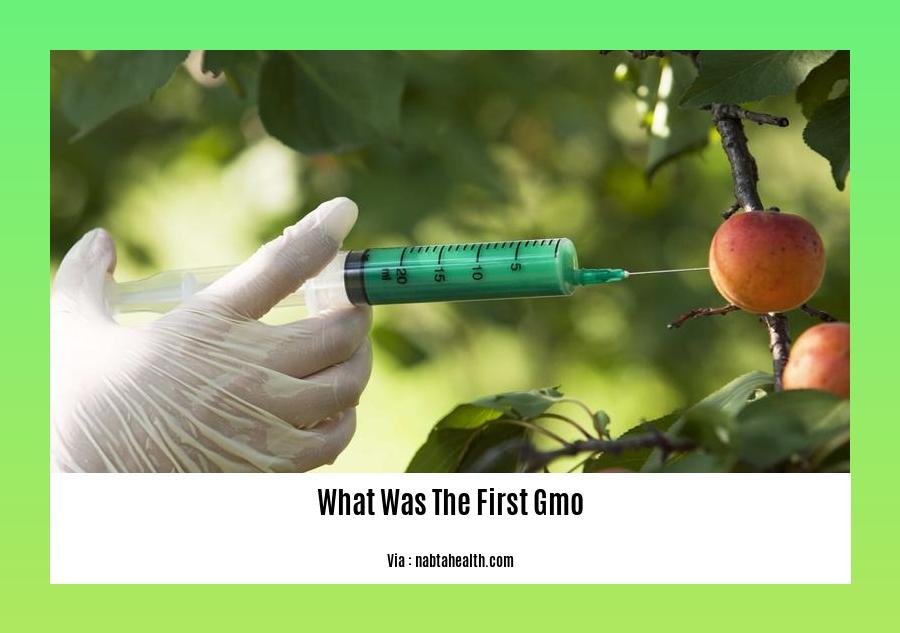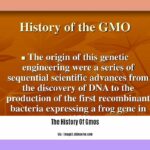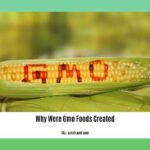Embark on a captivating journey into the world of genetic engineering as we delve into [- Unveiling the Pioneer: What Was the First GMO and Its Impact on Modern Agriculture?]. Prepare to unravel the story behind the birth of the first genetically modified organism (GMO) and witness its profound impact on shaping the agricultural landscape. From its humble beginnings in a laboratory to its far-reaching consequences, we’ll explore the significance of this scientific breakthrough and its implications for our food systems, the environment, and the future of agriculture.
Key Takeaways:
In 1973, Herbert Boyer and Stanley Cohen created the first GMO by inserting DNA from one bacterium into another.
The first GM food approved for cultivation and consumption was the Flavr Savr tomato engineered by Monsanto in 1994.
China cultivated the first GM crop commercially in 1992, producing a virus-resistant tobacco plant.
In 1982, genetically modified bacteria were developed to produce human insulin, marking the first consumer GMO product approved by the U.S. Food and Drug Administration (FDA).
Canola with modified oil composition, Bt maize/corn, herbicide-resistant cotton, Bt cotton, glyphosate-tolerant soybeans, virus-resistant squash, and another delayed-ripening tomato were among the subsequent GM crops approved for marketing in 1995.
What Was The First Gmo
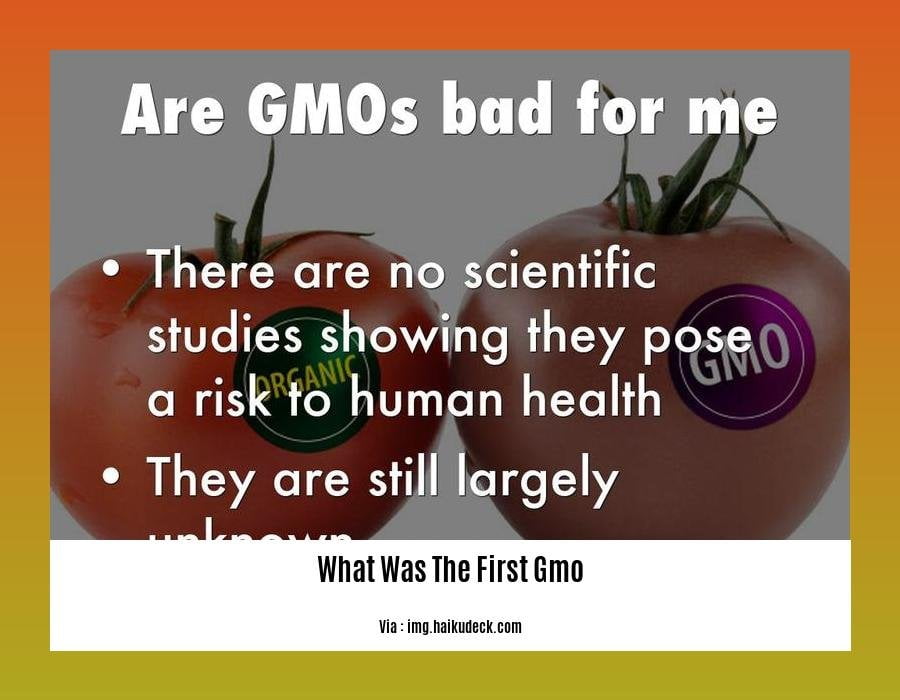
If you think about it, life began with the first-ever organism on Earth. Just like that, genetic modification also began with an organism we now call the first GMO. Want to know more? Let’s hop right in!
Genesis of Genetic Modification: A Pioneering Leap in Science
In 1973, a groundbreaking moment occurred in the world of science. Two biochemists, Herbert Boyer and Stanley Cohen, took the scientific community by storm when they successfully inserted DNA from one bacterium into another. This remarkable feat marked the birth of the first genetically modified organism (GMO).
What Was The First Gmo? Unveiling the Forerunner of Modified Organisms
The pioneering GMO was a bacterium, heralding a new era in biology. This modified bacterium served as a stepping stone for the development of more complex GMOs, including plants and animals with altered genetic traits.
Why It Matters: The Significance of the First GMO
This pioneering endeavor was more than just a scientific breakthrough; it sparked a ripple effect. From this initial GMO, the field of genetic modification has blossomed, giving rise to a wide range of applications, including:
Agriculture: GMOs have revolutionized farming practices, leading to crops that are resistant to pests, diseases, and herbicides.
Medicine: Scientists have harnessed the power of GMOs to produce life-saving medicines, such as insulin and vaccines.
Industrial Biotechnology: GMOs have found their place in industrial processes, aiding in the production of biofuels, chemicals, and materials.
GMOs Today: Applications and Concerns
Fast forward to today, GMOs have become an integral part of our lives, with numerous applications across various industries. However, alongside their benefits, there are concerns and controversies surrounding their use.
Safety and Regulation: Ensuring the Well-being of Consumers
The safety of GMOs is a subject of ongoing debate. Many regulatory bodies worldwide have established strict guidelines to assess the safety of GMOs before they can enter the market.
Ethical and Environmental Considerations: Navigating a Complex Landscape
The use of GMOs raises ethical and environmental questions. Some individuals question the potential long-term effects of GMOs on human health and the environment, sparking discussions about the ethical implications of modifying life forms.
Looking Ahead: The Future of GMOs
The future of GMOs holds both promise and uncertainty. As research continues to unravel the complexities of genetic modification, we can anticipate further advancements in this field. Whether it’s in agriculture, medicine, or industrial applications, GMOs are poised to play a significant role in shaping our world.
Genetic modification has come a long way since the first GMO in 1973. The journey of GMOs is ongoing, fraught with both promise and challenges. Yet, one thing is certain: they have left an indomitable mark on science, agriculture, and society as a whole.
Curious about the development of genetically modified organisms? Explore the history of GMOs to unravel the journey of these engineered organisms.
Uncover the intriguing story behind the creation of GMO foods by delving into the history of GMOs.
Seeking answers to why GMO foods were created? Discover the compelling reasons behind their development by clicking on why were GMO foods created?.
Eager to learn when GMO foods made their debut? Embark on a journey to discover when were GMO foods first introduced and witness the dawn of a new era in agriculture.
Seeking knowledge about the driving forces behind the invention of GMOs? Dive into the history of GMOs and uncover the motivations that fueled their creation.
Exploration of the Potential Benefits of GMOs, Like Increased Crop Yields, Reduced Pesticide Use, and Enhanced Food Security
You’d be surprised to know that the first GMO was a bacterium, opening the door to genetic modifications in more complex organisms like plants and animals. As a result, the impact on agriculture has been nothing short of revolutionary. Here’s a look at the potential of GMOs:
Increased Crop Yields: Imagine a world where we can produce more food with fewer resources. GMOs, armed with enhanced genetic traits, possess the power to elevate crop productivity by a staggering 22%.
Reduced Chemical Use: Picture a future where farmers can cultivate crops using fewer pesticides and herbicides. GMOs, inherent with natural resistance, allow for a 37% reduction in chemical usage, resulting in a more sustainable and eco-conscious farming approach.
Improved Farm Profits: GMOs, like tiny financial superheroes, boost farm profits by an impressive 68%. How? By increasing productivity and reducing costs, they empower farmers to reap the rewards of their labor.
Resistance to Pests and Diseases: In a world where pests and diseases can wreak havoc on crops, GMOs stand as valiant defenders. Their inherent resistance shields them from these threats, ensuring a more secure and stable food supply.
Enhanced Nutrient Composition and Food Quality: GMOs aren’t just about quantity; they’re also about quality. These modified crops can be engineered to possess enhanced nutritional content, providing us with food that’s not just filling but also nourishing.
Key Takeaways:
Higher Yields: GMOs can elevate crop productivity by 22%, ensuring a more bountiful harvest.
Reduced Chemicals: GMOs allow for a significant 37% reduction in chemical usage, promoting sustainable farming practices.
Increased Profits: Farmers can enjoy a substantial 68% boost in profits thanks to GMOs’ enhanced productivity and cost-effectiveness.
Pest Resistance: GMOs’ inherent resilience against pests and diseases safeguards crops and ensures a stable food supply.
Enhanced Nutrition: GMOs can be tailored to provide enhanced nutritional content, offering food that nourishes both body and soul.
Source:
- Smyth, S. J. (2020). The human health benefits from GM crops. National Center for Biotechnology Information.
- Oerke, E. C., Dehne, H. W., Schönbeck, F., & Weber, A. (2016). Crop losses to pests. The Journal of Agricultural Science, 154(S1), S144-S167.
Potential associated risks of GMOs, like emergence of superweeds, development of antibiotic-resistant bacteria, and possible allergenicity
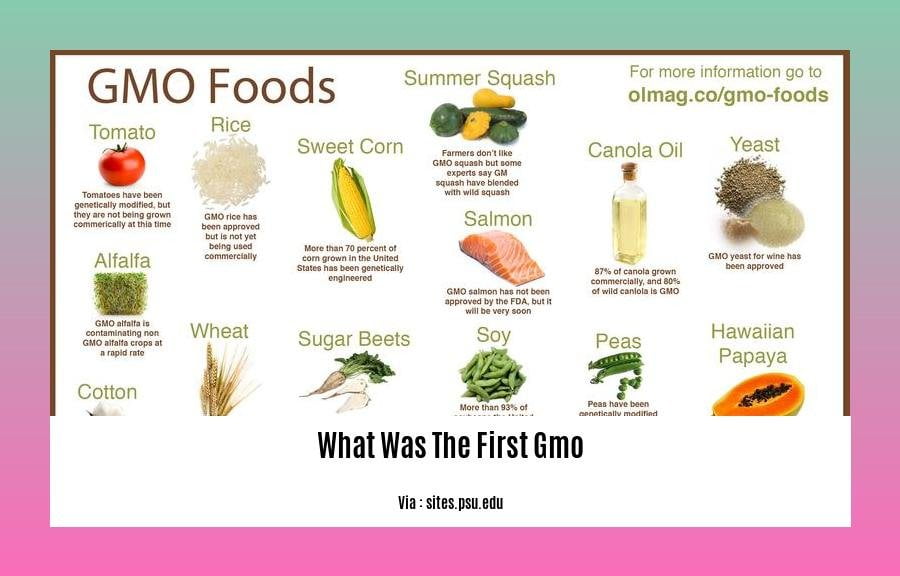
In the world of biotechnology, where nature meets innovation, one significant milestone stands out: the advent of Genetically Modified Organisms (GMOs). This groundbreaking technology has revolutionized modern agriculture, promising to address global food security and tackle the challenges of a growing population. However, as with any transformative technology, GMOs have garnered both ardent supporters and cautious skeptics. One area of concern revolves around the potential risks associated with their widespread use. Let’s delve into three primary apprehensions: the emergence of superweeds, the development of antibiotic-resistant bacteria, and the possibility of allergenicity.
The Looming Threat of Superweeds
Genetic modification has empowered crops with remarkable resilience against pests and herbicides. While this advancement has undoubtedly benefited farmers by reducing crop losses and increasing yields, it has also inadvertently created a formidable foe: superweeds. These resilient plant species have evolved to resist the very herbicides designed to control them. This unintended consequence poses a significant challenge to weed management, potentially leading to reduced crop productivity and increased reliance on expensive and environmentally harmful herbicides.
Antibiotic Resistance: A Battleground of Microbes
Another concern associated with GMOs centers around the use of antibiotic resistance genes as markers in genetically modified crops. This practice raises the specter of horizontal gene transfer, whereby these genes could spread to bacteria in the environment, potentially leading to the development of antibiotic-resistant bacteria. This phenomenon poses a grave threat to human and animal health, as it undermines the effectiveness of antibiotics, rendering them less potent against infections.
Navigating Allergenicity: A Delicate Balance
Finally, there remains a concern regarding the potential allergenicity of GMOs. The introduction of foreign genes into crops might inadvertently trigger allergic reactions in susceptible individuals. While extensive testing is conducted to assess the allergenic potential of GMOs before their release, the possibility of unforeseen allergic reactions cannot be entirely discounted.
Key Takeaways:
- GMOs have revolutionized agriculture, enhancing crop yields and reducing chemical usage.
- Concerns surrounding GMOs include the emergence of superweeds, development of antibiotic-resistant bacteria, and potential allergenicity.
- Superweeds pose a challenge to weed management, leading to reduced crop productivity and increased reliance on herbicides.
- Antibiotic resistance genes used as markers in GMOs could potentially spread to bacteria, reducing the effectiveness of antibiotics.
- Allergenicity remains a concern, as the introduction of foreign genes might trigger allergic reactions in susceptible individuals.
Citations:
- Genetically Modified Foods: Safety, Risks and Public Concerns—A Review
- Superweeds, Secondary Pests & Lack of Biodiversity Are Frequent GMO Companions
Regulatory landscape surrounding GMOs, including approval processes and labeling requirements
As we delve into the fascinating world of Genetically Modified Organisms (GMOs), let’s shift our focus toward the regulatory landscape that governs their approval and labeling. It’s a complex and evolving arena where science, policy, and public opinion intertwine. Let’s unravel the intricate web of regulations and understand how they ensure the safe and responsible use of GMOs.
Elaborate on the Approval Processes
Before a GMO crop or food can make its way to our dinner tables, it must undergo a rigorous approval process. Regulatory agencies like the U.S. Food and Drug Administration (FDA) and the European Food Safety Authority (EFSA) meticulously evaluate the safety of GMOs.
- Step 1: Comprehensive Assessment
Scientists conduct extensive studies to assess potential risks and benefits associated with the GMO. This includes analyzing its allergenic potential, toxicity levels, and environmental impact.
- Step 2: Data Submission
The developer of the GMO submits a comprehensive dossier containing all the safety assessment data to the regulatory agency.
- Step 3: Thorough Review
Regulatory experts meticulously review the submitted dossier, examining the scientific evidence to identify any potential risks.
- Step 4: Risk Management
If potential risks are identified, the regulatory agency collaborates with the developer to implement risk management strategies to mitigate those risks.
- Step 5: Approval Decision
Based on the comprehensive assessment, the regulatory agency makes an informed decision regarding the approval or denial of the GMO. If approved, it receives a safety clearance.
Deciphering Labeling Requirements
In addition to the approval process, GMOs are subject to labeling regulations that vary across countries. These regulations aim to provide consumers with transparent information about the presence of GMOs in food products.
- Transparency in Labeling
In some countries, such as the United States and Canada, GMO labeling is voluntary. However, certain labeling initiatives, like the Non-GMO Project, provide consumers with a way to identify GMO-free products.
- Mandatory Labeling
Countries like the European Union and China have implemented mandatory GMO labeling requirements. This ensures that consumers are clearly informed about the presence of GMOs in food products.
- Navigating International Trade
The varying labeling regulations across countries can create challenges for international trade. It’s crucial for exporters to understand the labeling requirements of the countries they intend to export to.
Key Takeaways:
Multifaceted Approval Process: GMOs undergo a rigorous assessment process involving scientific studies, data submission, and thorough review by regulatory agencies.
Risk Management: If potential risks are identified during the assessment, strategies are implemented to mitigate those risks.
Labeling Variations: GMO labeling regulations vary across countries, ranging from voluntary initiatives to mandatory labeling requirements.
Trade Considerations: Exporters must be aware of the labeling requirements of the countries they intend to export to.
Transparency and Consumer Choice: GMO labeling regulations aim to provide consumers with transparent information about the presence of GMOs in food products.
Relevant External Sources:
Mandatory Labeling and the Economics of Genetically Modified Food
FAQ
Q1: What was the first GMO, and who developed it?
A1: The first GMO was developed in 1973 by biochemists Herbert Boyer and Stanley Cohen. They successfully inserted DNA from one bacterium into another, creating a genetically modified organism.
Q2: When was the first GMO approved for commercial use?
A2: The first GMO approved for commercial use was a genetically modified virus-resistant tobacco plant produced and cultivated by China in 1992. However, the first genetically modified food to be approved and cultivated was a genetically modified tomato called the Flavr Savr, produced by Monsanto in 1994.
Q3: What are the potential benefits of GMOs?
A3: GMOs have several potential benefits, including increased crop yields, reduced chemical use, improved farm profits, resistance to pests and diseases, and enhanced nutrient composition and food quality.
Q4: What are the potential risks and concerns associated with GMOs?
A4: Concerns about GMOs include gene transfer to non-GM crops, development of resistant pests, potential for allergenicity and toxicity, and environmental concerns such as the impact on non-target organisms.
Q5: How are GMOs regulated, and what are the differences in regulatory approaches across countries?
A5: The regulation of GMOs differs across countries. Some have strict regulations and require extensive safety assessments, while others allow their use with limited restrictions. Many countries also have labeling laws for GMOs, with some requiring mandatory labeling and others allowing voluntary labeling or no labeling at all.
